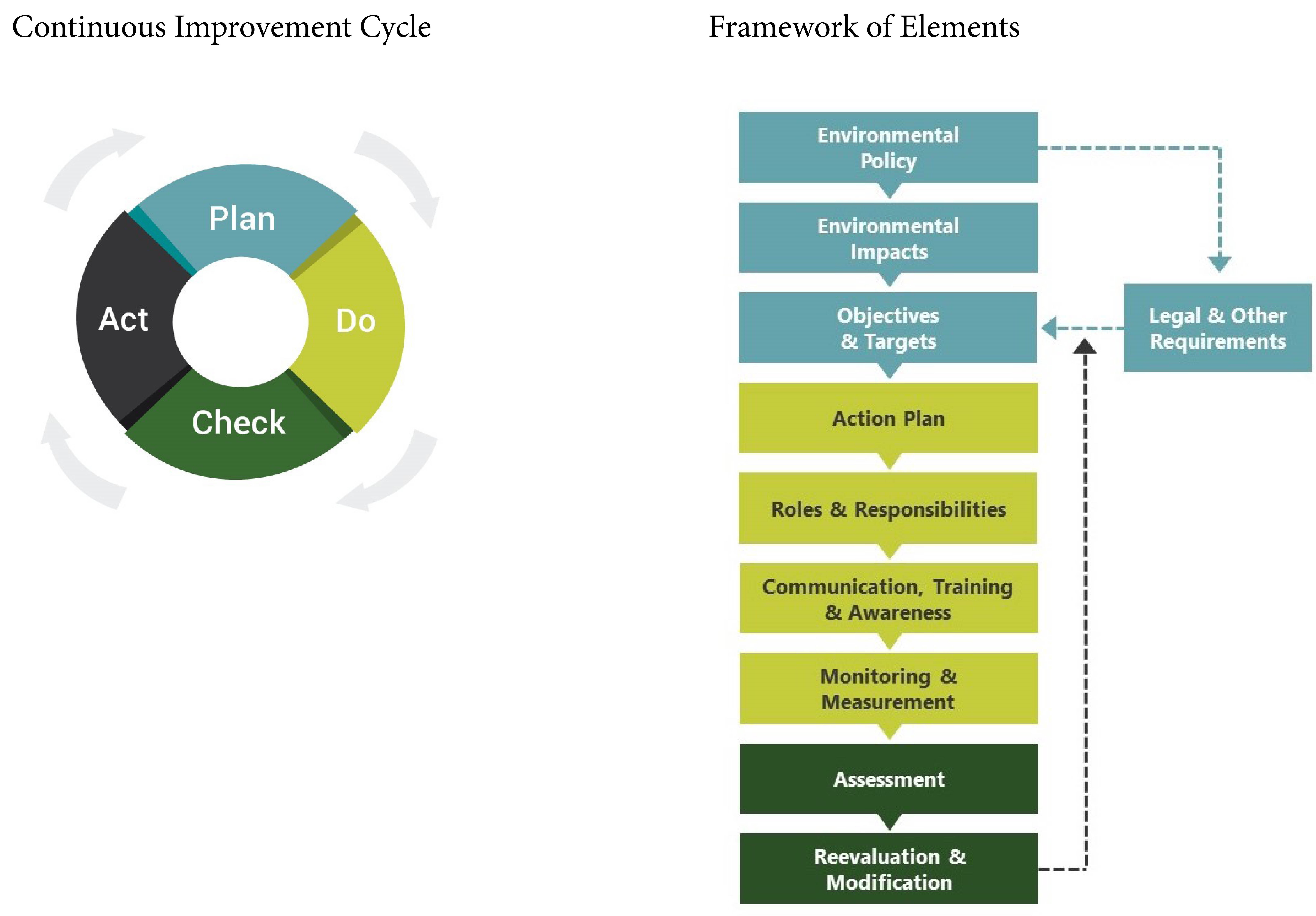The Environmental System (EMS) program is a voluntary, alternative to Comprehensive Planning for solid waste planning areas and permitted facility
service areas actively pursuing environmental stewardship goals in six
environmental areas.
Environmental Components

With DNR assistance, participating
agencies develop their own EMS with a framework of ten elements that follows
the proven plan-do-check-act method for continuous environmental improvement.

By implementing the EMS framework across their organizations, EMS participants have reported increased operational efficiencies, better continuity and communication improvements. EMS participants are exempt from most comprehensive planning update requirements in Iowa Administrative Rule Chapter 567-101. Instead, under Iowa Administrative Rule Chapter 567-111, EMS participants demonstrate their environmental performance by submitting an annual report and undergoing an annual audit. DNR supports designated EMS participating agencies with trainings, conferences and networking opportunities as well as financial incentives, such as reduced tonnage fees and grant opportunities.
Solid waste planning areas and permitted facility service areas may apply for EMS designation before February 1 st of each year. Applicants approved by the Environmental Protection Commission become designated as Tier 1 EMS participants. Tier 1 participants receive twelve to eighteen months of specialized training from the DNR along with guidance from a Tier 2 mentor. An EMS becomes a Tier 2 participant after successfully implementing the EMS framework and demonstrating progress in pursuing their environmental goals by completing an audit and submitting an annual report.
DNR Contact
Laurie Rasmus
515-474-4921
Laurie.Rasmus@dnr.iowa.gov